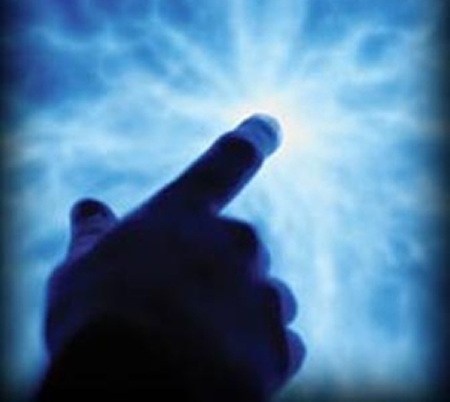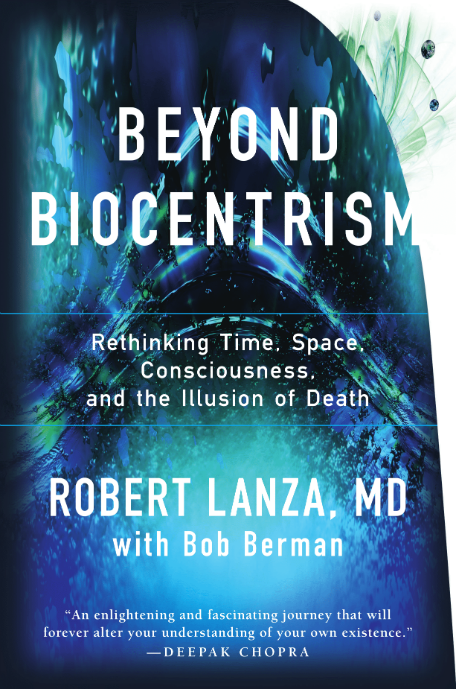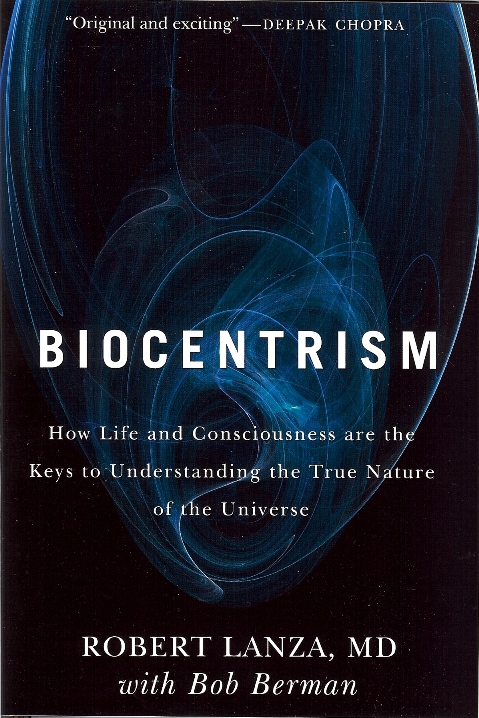Everything we perceive (color, sound & energy itself) is a process involving us

But it’s worse than that. Until recently we thought we knew what the universe was made of, but it now turns out that 96% of the universe is composed of dark matter and dark energy, and we have no idea what they are. We’ve accepted the big bang, even though it provides no explanation for why the universe is exquisitely fine tuned to support life.
Our understanding of the fundamentals of the universe is actually retreating before our eyes. The more data we gather, the more we’ve had to juggle our theories or dismiss findings that simply make no sense.
We need a new perspective. Our current theories of the physical world don’t work, and can never be made to work until they account for life and consciousness. Rather than a belated and minor outcome after billions of years of lifeless physical processes, biocentrism proposes that we’re absolutely fundamental to understanding the universe.
In the process of advancing physical theories of the universe, Western science has unwittingly managed to lock itself in a cage. The 21st century is predicted to be the Century of Biology, a shift from the previous one dominated by physics. It seems fitting, then, to begin the century by looking to life for answers, not imaginary strings that occupy equally imaginary unseen dimensions.
Consider, for example, the old question, “If a tree falls in the forest, and nobody is there, does it make a sound?” Most people answer decisively in the affirmative. “Of course it makes a sound,” you might reply, as if it were too dumb to merit contemplation. By taking this stance, you’re actually averring your belief in an objective, independent reality. The prevailing mindset is of a universe that exists just as well without us as with us. This fits in tidily with the Western view held at least since Biblical times, that “little me” is of small importance or consequence in the cosmos.
But what occurs when a tree falls. Basic earth science tells us that sound is created by a disturbance in some medium, usually air. Branches and trunks striking the ground create rapid pulses of air. So, what we have in hand, in actuality are rapid air-pressure variations, which spread out at around 750 mph. This, according to simple science, is what occurs even when a brain-ear mechanism is absent—tiny, rapid, puffs of wind. There’s no sound attached to them.
Now if a person is nearby, the air puffs cause the ear drum to vibrate, which then stimulates nerves only if the air is pulsing between 20 and 20,000 times a second (or less for us whose youth included rock concerts). Air that puffs 15 times a second isn’t intrinsically different from air that pulses 30 times, yet the former will never result in a human perception of sound. In any case, nerves stimulated by the moving eardrum send signals to the brain resulting in the cognition of a noise. Only then does human consciousness conjure the noise experience. In short, an observer, an ear, and a brain are every bit as necessary for the experience of sound as are the air pulses. The external world and consciousness are correlative.
When someone dismissively answers, “Of course a tree makes a sound if no one’s nearby” they’re merely demonstrating their inability to ponder an event nobody attended. They’re finding it too difficult to take themselves out of the equation. They somehow continue to imagine themselves present when they are absent.
Now consider a lit candle placed in that same empty forest. This isn’t an advisable set-up, but consider whether the flame has intrinsic brightness and a yellow color when no one’s watching. Even if we contradict quantum experiments and allow that particles have assumed actual positions in the absence of observers, the flame is still merely a hot gas. Like any source of light, it emits tiny packets of electromagnetic energy. These momentary exhibitions of electricity and magnetism are the whole show, the nature of light itself.
On its own, there is nothing inherently visual, nor bright or colored about that candle flame. Now if electromagnetic waves strike a human eye, and if (and only if) the waves happen to each measure between 400 and 700 nanometers in length, then their energy is just right to stimulate the cones in the retina, which in turn send electrical pulses to neurons and until they reach the back of the brain. There, we subjectively experience a yellow brightness occurring in a place we’ve been conditioned to call “the external world.” Other creatures receiving the identical stimulus may experience something different, such as a perception of gray, or even have an entirely dissimilar sensation. The point is, there isn’t a “bright yellow” light “out there” at all. WE are totally necessary for the experience of what we call a yellow flame. Again it’s correlative.
What about if you touch the fallen tree? Isn’t it solid? This, too, is a sensation strictly inside your brain and only “projected” to your fingers, whose existence also lies within the mind. Moreover, that sensation of pressure isn’t caused by any contact with a solid, but because every atom has negatively charged electrons in its outer shells that repel each other; so the bark’s electrons repel yours and you feel a force stopping your fingers. Nothing solid ever meets any other solids. The atoms in your fingers are each as empty as a vacant football stadium in which a fly sits on the 50 yard line.
Consider rainbows: we’re also necessary for their existence. When nobody’s there, there simply is no rainbow. Not that again, you might be thinking, but this time it’s more obvious than ever. If your eyes look directly opposite the sun, the water droplets will produce a rainbow surrounding that spot at a distance of 42 degrees. But your eyes must be located at that spot where the refracted light from the sunlit droplet converge, to complete the required geometry. A person next to you will see a separate rainbow. If the sunlit droplets are very nearby, the person may not see a rainbow at all. Your rainbow is yours alone. An eye-brain system (or its surrogate, a camera, whose results will only be viewed later by a conscious observer) must be present to complete the geometry. As real as the rainbow looks, it requires your presence.
Few would dispute the subjective nature of rainbows, which figure so prominently in fairytales that they seem only marginally to belong to our world in the first place. It’s when we fully grasp that the sight of a skyscraper (or any other object) is just as dependent on the observer, that we’ve made the required leap to the true nature of things.
The most astounding fact about the universe is the knowledge that everything we perceive—color, sound, and even energy itself—is a process that involves our consciousness.
Biocentrism and Beyond Biocentrism (BenBella Books) lays out Lanza’s theory of everything.
Further Reading
“Beyond Biocentrism is an enlightening and fascinating journey that will forever alter your understanding of your own existence.”
—Deepak Chopra
“Beyond Biocentrism is a joyride through the history of science and cutting-edge physics, all with a very serious purpose: to find the long-overlooked connection between the conscious self and the universe around us.”
—Corey Powell, ex editor-in-chief, Discover magazine
“Will machines ever achieve consciousness? Are plants aware? Is death an illusion? These are some of the big questions tackled in Beyond Biocentrism, which serves up a new, biology-based theory of everything that is as delightful to read as it is fascinating.”
—Pamela Weintraub, ex editor-in-chief of OMNI Magazine
Biocentrism takes you on a seemingly improbable but ultimately inescapable journey through a foreign universe‒our own‒from the viewpoints of an acclaimed biologist and a leading astronomer. It will shatter your ideas of life-time and space, and even death…you will never see reality the same again
“Like “A Brief History of Time” it is indeed stimulating and brings biology into the whole. Any short statement does not do justice to such a scholarly work… Most importantly, it makes you think.”
—Nobel Prize Winner E. Donnall Thomas


